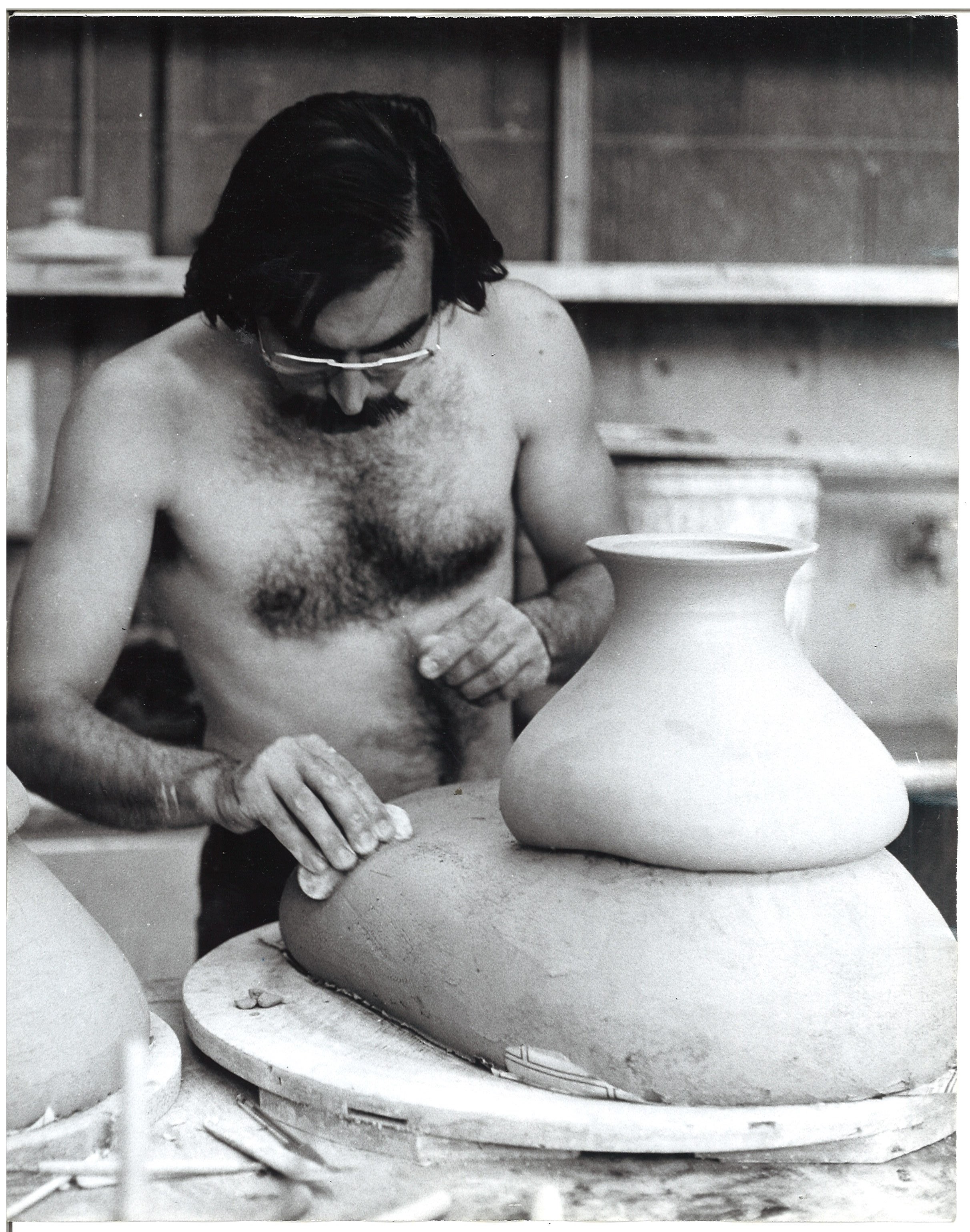Walter Hyleck

(b. 1942) born in Beloit, Wisconsin, lives and works in Berea, Kentucky Double Sphered Landscape, 1973 clay, 3.5 x 12 x 5 inches, 93.39.92
Well respected as an educator, Walter Hyleck first studied art and art history as an undergraduate at the University of Minnesota, and then in graduate school at Tulane University. After graduating in 1967, he placed roots in Berea, Kentucky, beginning his extensive career as an educator at Berea College. In 1970 he founded the influential and longstanding Berea College Ceramic Apprenticeship Program, which mentored students in the technical aspects of ceramic design, production, and marketing while also helping to develop students’ artistic vision and expression. This program fostered close relationships between students and faculty and helped produce many successful ceramic artists and teachers.
In the spring of 1971, under the auspices of the International Academy of Ceramics, the Tennessee Arts Commission pledged its support for the promotion and establishment of the U.S. International Ceramic Symposiums. The Symposium’s mission to help develop a worldwide network of support for ceramic art was achieved by bringing together top ceramic artists from around the world for a month-long sharing of ideas and creation of innovative ceramics.



Left: Photo Courtesy Lewis Snyder, Center and Right: Walter with work Video below
Hyleck represented the United States at the First U.S. International Ceramic Symposium, which consisted of twenty-five artists from thirteen different countries, and was hosted in the summer of 1973 at the Memphis Academy of Art. At the Symposium, Hyleck made several large works that combine multiple wheel-thrown and slab forms. After firing in the raku kiln, he would allow some parts to remain uncovered, managing the glaze’s reduction by controlling its exposure to the air. These forms are bulbous and organic, reflecting his interest at the time of an architectural exploration of the vessel. They also were Hyleck’s way of making sense of and commenting on the U.S. political and military situations during the 1970s. One series that he produced during the Symposium, Dealing with the Brink, examines the implications of warfare through missiles and explosion clouds like forms.
After the Symposium, Hyleck continued to teach at Berea, where in 1984 he became the Morris B. Belknap Chair in Fine Art. A 40-year retrospective of his work was held when he retired, showcasing the progression to his recent years where he has been inspired by geological events, a deep knowledge of the earth, and a focus on surface. Since retirement, he has continued working in his personal studio, becoming more interested in the commercial exhibition of his work.
Hyleck has participated in over 250 solo, invitational, and juried exhibitions, which include showing work at the Smithsonian Institute in DC, the Museum of Arts and Design in NYC, and the Kentucky Museum of Art and Craft in Louisville, KY. A dedicated teacher, he has held workshops and classes across the U.S. and Canada. His work is held in numerous permanent collections, including at the American Museum of Ceramic Art in Pomona, California; the Mint Museum in Charlotte, NC; and the University of Indianapolis.
Many artists, including myself, spend much times solving problems. For the most part they are hypothetical in nature and rarely resolved as solutions. It’s time to realize that artists invent problems for their own sake. Artists are problem makers. – Exhibition statement, University of Michigan, 1989
Walter Hyleck develops a form with wheel-thrown parts at the 1973 International Ceramic Symposium.
Written by Aiden Layer, TN Arts Intern

